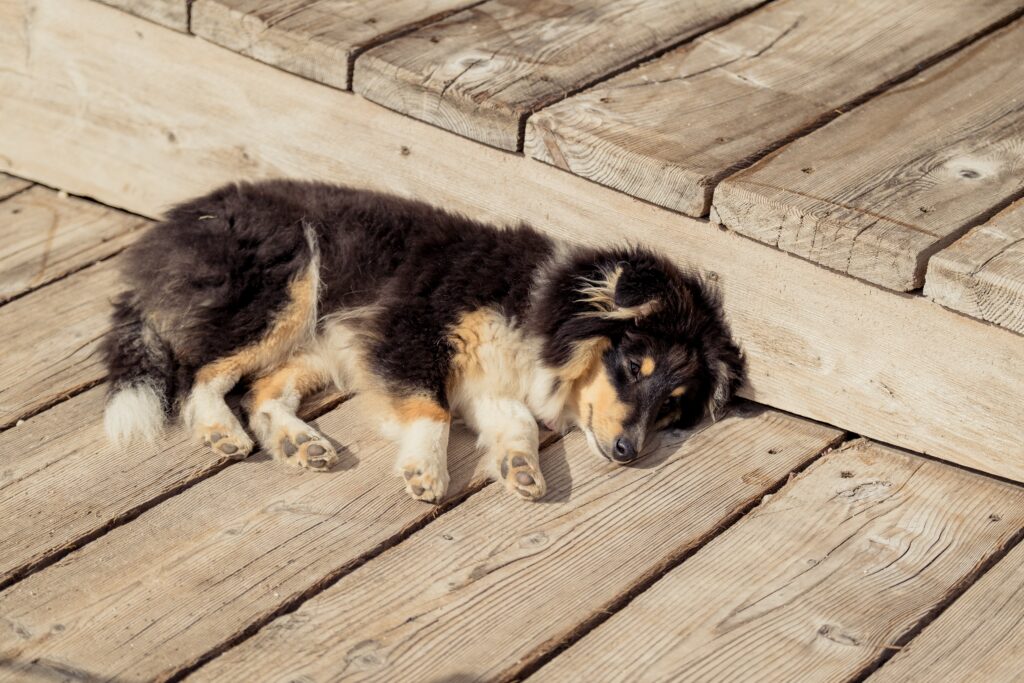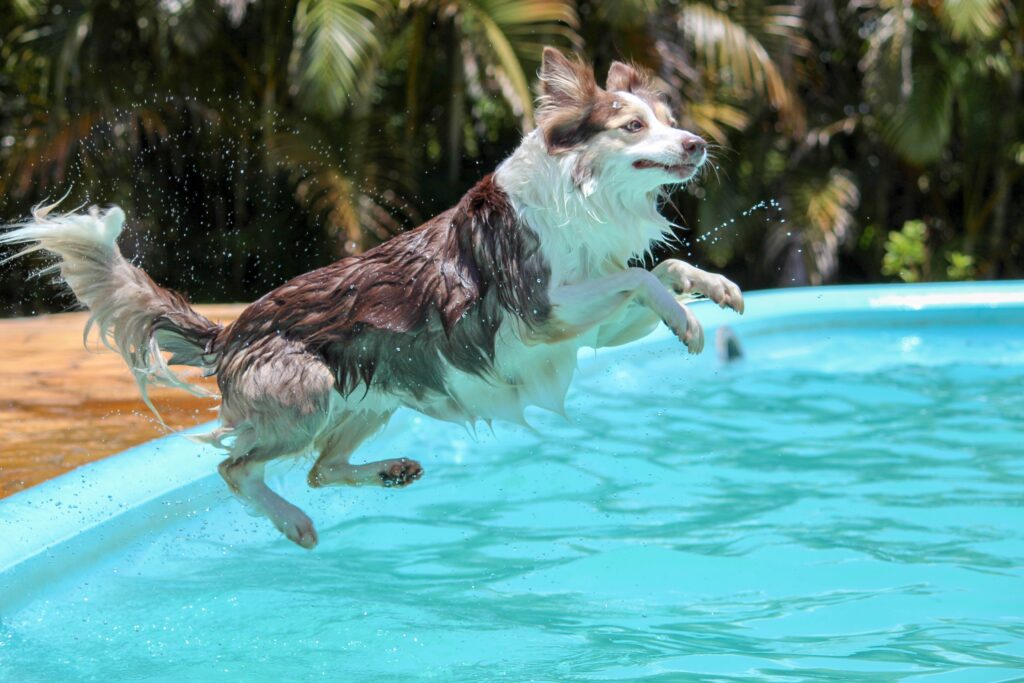Our furry friends bring us so much joy and happiness, and it’s our responsibility to ensure their well-being. When it comes to sun protection, we often think about ourselves, but did you know that dogs can also suffer from sunburn and other harmful effects of the sun? In this article, we’ll explore why dogs should wear sunscreen and discuss the potential dangers of sun exposure. We’ll also provide options for dog-friendly sunscreens that you can purchase to keep your canine companion safe and comfortable.

Why Dogs Need Sunscreen:
- Vulnerable Areas: Dogs, especially those with light-colored or thin coats, are susceptible to sunburn on their noses, ears, bellies, and other areas with less hair coverage.
- Risk of Skin Cancer: Prolonged exposure to the sun’s harmful ultraviolet (UV) rays increases the risk of skin cancer in dogs, especially in breeds with lighter pigmentation.
- Pain and Discomfort: Sunburn can be painful and uncomfortable for dogs, causing redness, inflammation, blistering, and even peeling of the skin.
Harmful Effects of Sun Exposure on Dogs:
- Sunburn: Dogs can experience sunburn, which can cause pain, itching, and skin damage.
- Heat Stroke: Excessive sun exposure can lead to overheating and potentially life-threatening heat stroke in dogs, especially in hot climates or during intense physical activity.
- Eye Damage: Dogs with light-colored eyes are more susceptible to sun-related eye issues, including cataracts and corneal damage.
- Skin Cancer: Prolonged sun exposure can increase the risk of skin cancer, such as squamous cell carcinoma and melanoma, in dogs.
Choosing the Right Dog Sunscreen:
When selecting a sunscreen for your dog, keep the following in mind:
- Dog-Specific Formulation: Use a sunscreen specifically designed for dogs, as human sunscreen may contain ingredients that can be toxic to them.
- Broad-Spectrum Protection: Look for a sunscreen that provides broad-spectrum protection against both UVA and UVB rays.
- Non-Toxic Ingredients: Ensure the sunscreen is free from harmful ingredients such as zinc oxide, which can be toxic to dogs if ingested.
- Water-Resistant: Opt for a water-resistant sunscreen to ensure it stays effective, even if your dog goes for a swim or sweats.
Dog-Friendly Sunscreen Options:
- Epi-Pet Sun Protector Spray – A dog-specific sunscreen spray that offers broad-spectrum UVA and UVB protection.
- My Dog Nose It! Sunscreen – A non-greasy and non-toxic sunscreen designed specifically for dogs’ sensitive skin.
- EBPP Dog Sunscreen – All-purpose defense for all breeds – Short, thin, white or pink skinned canines will benefit from our sun protection for dogs.
- Petkin Doggy Sunstick – A convenient and easy-to-apply sun stick that provides protection for sensitive areas like the nose, ears, and belly.
Remember to follow the instructions provided by the manufacturer when applying sunscreen to your dog. Apply it generously to exposed areas, and reapply as needed, especially after swimming or vigorous activity.
Additional Sun Safety Tips for Dogs:
- Provide Ample Shade: Whether you’re at the beach, park, or camping, make sure to provide your dog with plenty of shade. Seek out shaded areas under trees, bring a pop-up canopy or umbrella, or create a shaded spot using a portable sun shelter specifically designed for pets. This will help shield them from direct sunlight and keep them cool.
- Limit Outdoor Activity During Peak Hours: Avoid outdoor activities during the hottest part of the day, typically between 10 am and 4 pm when the sun’s rays are strongest. Instead, plan your adventures in the early morning or late afternoon when temperatures are milder and the sun is less intense.
- Keep Fresh Water Available: Hydration is crucial for dogs, especially when they’re exposed to heat and sun. Always have fresh, cool water readily available for your dog to drink. Consider bringing a collapsible water bowl or a portable pet water bottle to ensure they stay hydrated during outdoor excursions.
- Protect Paws from Hot Surfaces: Remember that pavement, sand, and other surfaces can become scorching hot under the sun, potentially causing burns and discomfort for your dog’s paws. Before heading out, check the ground temperature by placing your hand on it. If it feels too hot for your hand, it’s too hot for your dog’s paws. Opt for shady areas or use protective booties to shield their paws from extreme heat.
- Monitor Signs of Overheating: Dogs can easily overheat, leading to heatstroke, which can be life-threatening. Watch for signs such as excessive panting, drooling, restlessness, lethargy, vomiting, or bright red gums. If you notice any of these symptoms, immediately move your dog to a cool, shaded area, offer water, and contact a veterinarian.
- Consider Protective Clothing: Just like humans wear sun-protective clothing, consider investing in lightweight, breathable doggy shirts, rash guards, or hats that offer UV protection. These specially designed garments can help shield your dog’s skin from direct sunlight, minimizing the risk of sunburns and skin damage.
- Regular Veterinary Check-ups: Schedule regular visits with your veterinarian to ensure your dog’s overall health and well-being. Your vet can perform skin checks, monitor any suspicious skin growths, and provide guidance on sun safety measures tailored to your dog’s specific needs.
By implementing these additional sun safety tips, you can further protect your furry friend from the sun’s harmful rays and ensure they enjoy safe and comfortable outdoor experiences. Remember, a little extra precaution goes a long way in safeguarding your dog’s health.

Our beloved canine companions rely on us to safeguard their well-being, and protecting them from the sun’s harmful UV rays is an integral part of responsible pet ownership. By understanding the risks of sunburns and skin cancer, and incorporating sunscreen as part of their outdoor routine, we can ensure our dogs enjoy sun-soaked adventures without compromising their health. So, next time you’re enjoying outdoor activities with your furry friend, don’t forget to shield them with a dog-friendly sunscreen and take the necessary steps to keep them safe under the sun.
Some of the links in this article may be affiliate links, which can provide compensation to us at no cost to you if you decide to purchase something. These are products we’ve personally used and stand behind. We have put hours into creating a guide for our audience for the little percent we receive in return is appreciated. This site is not intended to provide financial advice. You can read our affiliate disclosure in our privacy policy.

